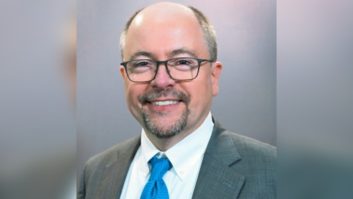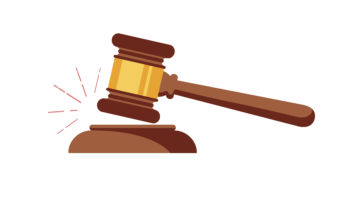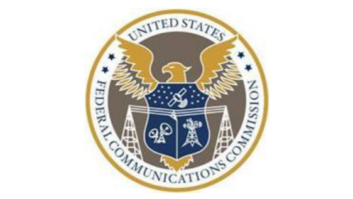
Preparing to depart from the Federal Communications Commission, Chairwoman Jessica Rosenworcel this week released her annual message listing what she considers the most important FCC activities of the past year.
Of interest to broadcasters, her list includes the creation of an alert code for Missing and Endangered Persons; changes to foreign sponsorship identification rules; and a proposal to require disclosure of the use of AI in political advertising. But not all of her initiatives may bear fruit. Republican Brendan Carr is tabbed to become chairman and has spoken forcefully against some of her ideas (read “Trump Presidency Will Bring Sweeping Change to FCC” in the latest issue of RW).
The text of her message is below; you can also read it here. (Links in the text were provided in the original.)
>>
The end of the year is always a time for reflection. That’s especially true for me in 2024 as my service at the Federal Communications Commission is coming to a close.
It has been the honor of a lifetime to serve in this role and a special privilege to be the first woman confirmed to do so. However, I am not just wrapping up four years leading the agency as its chairwoman. My journey at the FCC began back at the turn of the millennium when I first joined the agency staff. Over the years, I have worked on so many technology matters involving communications that it can become a blur. But looking back, I can see that my efforts consistently centered around a handful of core values: making communications available to all; making communications more just for more people in more places; protecting consumers; putting national security and public safety front and center; and leaning into the future. I believe these are the things we need to do to build a digital future that works for everyone.
I am gratified to see that the FCC has made real progress to advance these principles during 2024, defining my time at the agency.
Making Communications Available to All
I can’t talk about expanding access to communications in 2024 without first acknowledging the Affordable Connectivity Program. This was the largest broadband affordability effort in our nation’s history. It was established by the Bipartisan Infrastructure Law but created and operated by the FCC. It enrolled more than 23 million households across rural, suburban and urban America. That is one in six U.S. households. The ACP was an unprecedented success. Despite broad, bipartisan support for the ACP, funding expired this past May, and we had to wind the program down.
When the ACP expired, we didn’t get down, we got down to work — pursuing multiple solutions to help connect those on the wrong side of the digital divide.
In July, the FCC adopted rules to allow schools and libraries to use E-Rate funding to loan out Wi-Fi hotspots, which will provide internet access for students and library patrons across the country. By making this available in schools and libraries nationwide, we will help close the Homework Gap, making sure everyone can keep up with class and do their schoolwork in the digital age.
To help narrow the digital divide in Indian country, we built on earlier efforts to encourage greater tribal library participation in the FCC’s E-Rate program, and created a new advocacy program to help tribal communities take advantage of E-Rate resources to ensure they get the high-speed broadband they need.
You can’t make advanced communications available to all unless you know where broadband is and isn’t available. So, in 2024, the FCC continued our efforts to provide an accurate and complete picture of broadband availability, while also taking steps to improve the ongoing Broadband Data Collection processes. In particular, we released two new iterations of the National Broadband Map, which are light years ahead of the old maps that came before.
Using this new and improved broadband coverage data, we reignited the FCC’s 5G Fund for Rural America. This effort will deliver up to $9 billion in targeted investments to bring voice and 5G mobile broadband service to rural areas of the country unlikely to otherwise see unsubsidized deployment of next-generation wireless networks. We also adopted rules to increase existing support to connect Alaska by 30 percent beginning in 2025 and to extend support for fixed and mobile carriers through 2034.
We took significant steps to make sure people with disabilities have access to modern communications.
In October, we established that 100% of mobile handsets — such as smartphones — must be compatible with hearing aids and accessible to all those with hearing loss. Americans with hearing loss will now be able to choose among the same mobile phone models that are available to all consumers.
We also adopted new rules that take steps towards ensuring people with disabilities can fully use and participate in video conferencing services like Zoom and Teams, by clarifying that the Americans with Disabilities Act applies, paving the way for telecommunications relay services to be used during video conferencing calls.
We also updated closed captioning display setting standards to improve the video programming access of the deaf and hard-of-hearing and proposed improvements to the closed captioning certification process.
Making Communications More Just for More People in More Places
Building a digital future that works for all demands that we think about how the internet revolution is impacting vulnerable populations.
Since 2000, suicides in America are up nearly 40 percent, and are at levels not seen since World War II. With the introduction of 988 as the easy-to-remember 3-digit number for the 988 Suicide & Crisis Lifeline, we have more than tripled the number of people using the hotline to connect with emergency counseling. Under my watch, we previously made this support more accessible by moving beyond just voice calling and enabling texting to 988. Then, in 2024, we took the effort to improve the support of 988 one step further when we required wireless calls to the Suicide & Crisis Lifeline to route based on geographic area, so that individuals in crisis can get connected to resources in their community.
This year, we expanded our efforts to ensure survivors of domestic violence have the connectivity tools and services needed to separate from their abusers. In January, I sent letters to automobile manufacturers and wireless service providers seeking information about how connected car services were being used as tools for stalking and requesting their assistance in protecting domestic violence survivors. In April, the FCC began a proceeding examining potential solutions to help ensure that domestic violence survivors need not choose between access to personal transportation or exposing themselves to harmful behavior by those who can access a car’s data and connectivity.
We established a new alert code for Missing and Endangered Persons, like Amber Alerts, to help save missing and endangered persons by delivering critical alert messages to the public over television, radio, and wireless phones, but for those 18 and older. The new code is especially important for tribal communities, where American Indians and Alaska Native women and older girls are at a disproportionate risk of violence, murder and vanishing.
We also created a solution that for the first time will enable life-saving Wireless Emergency Alerts to be sent in more than a dozen languages and American Sign Language. When disaster strikes, everyone needs information in a language and format they understand. In the future, when officials send a multilingual WEA, your phone can display the relevant alert in your phone’s default language.
For decades, families of incarcerated people have been forced to pay exorbitant and unreasonable telephone rates. A single phone call — often the only way to stay in touch — can cost as much as many of us pay for a monthly unlimited plan. In June, the FCC adopted rules to implement the Martha Wright-Reed Just and Reasonable Communications Act, which significantly lower the rates for all international, intrastate and interstate voice and video communications in correctional facilities and finally deliver meaningful relief to those families.
Protecting Consumers
In 2024, the FCC worked aggressively to protect all consumers and to go after bad actors who try to take advantage of them.
We continued pursuing the FCC’s multi-pronged strategy to combat unwanted robocalls and texts. We voted to expand communications blocked under do-not-originate lists. These new rules also step up our enforcement efforts, including creating new financial penalties for carriers who fail to protect consumers from illegal calls. We adopted new rules making it simpler for consumers to revoke consent to receive robocalls and robotexts, and requiring that callers and texters implement such consent revocation requests in a timely manner.
We proposed the first-ever consumer protections against AI-generated robocalls and robotexts. We made clear that calls made with AI-generated voices are “artificial” under the law and thus require consumer consent. These proposals would establish disclosure requirements for AI-generated robocalls and robotexts to provide consumers with an opportunity to identify and avoid those calls or texts that contain an enhanced risk of fraud and other scams. We also cracked down on spoofed robocalls by bolstering the integrity of our caller ID authentication framework, which allows service providers to verify that the caller ID information you see on your phone is legitimate.
We issued the first-ever threat designation against a repeat international bad actor behind robocall campaigns. And, for the first time, we blocked all traffic from an international gateway provider known for allowing illegal robocalls from overseas onto our networks. We have also worked to strengthen our partnerships to fight junk calls, and, as of 2024, have Memoranda of Understanding with attorneys general in 49 states to do so.
We continued an aggressive consumer protection agenda by eliminating hidden billing fees and mandating “all-in” pricing disclosure by cable operators and satellite TV providers. Access to clear and accurate pricing helps consumers make informed choices and encourages competition in the market. We acted to keep the internet fast, open and fair for all consumers. We also launched a formal proceeding to review the quality of support cable, broadband, satellite television, and voice service providers give their customers, and kicked off a formal inquiry into providers’ use of data caps on consumer broadband services.
Through the continued intra-agency work of the Privacy and Data Protection Task Force, we secured “Consumer Privacy Upgrades” covering beneficial data protection, cybersecurity and consumer privacy terms in signed consent decrees with all of the largest wireless carriers.
Putting National Security and Public Safety Front and Center
Our commitment to consumer protection complements our obligations to support security and public safety.
In 2024, we assisted with communications recovery during Hurricanes Helene, Beryl, Milton and other disasters by deploying staff on the ground, issuing daily communications status reports, and — for the first time — activating our Mandatory Disaster Response initiative, which requires wireless providers to work together to reduce the impact of outages to the public. I also became the first leader of the agency to join the recovery team on the ground, traveling to North Carolina following Hurricane Helene.
The outage data we collect informs service restoration efforts during crises, and we updated our rules to close some outage reporting gaps.
We are dramatically reducing misrouted 911 calls and Real-Time Texts to 911 call centers, by requiring the use of more precise location-based information from cellphones, instead of cell towers, to route 911 calls and texts where they need to go and improve emergency response times.
We also adopted rules to expedite the transition to Next Generation 911 and support the deployment of advanced 911 capabilities — including video, text and data — that will help first responders save lives.
We investigated and issued a report detailing the cause and impact of a nationwide wireless service outage that occurred in February, along with recommendations to help prevent similar outages in the future. Our report highlighted steps that network operators should take to avoid outages when making changes to their networks, prevent configuration errors from escalating, and facilitate prompt recovery from large-scale outages.
To support the modern data needs of public safety, we adopted rules making it possible for first responders nationwide to have access to spectrum in 4.9 GHz band. This facilitates the use of the latest commercially available technologies, including 5G, for the benefit of public safety users.
Building on earlier efforts to revoke service authorizations and remove insecure equipment in our networks that pose a threat to national security, we modified our foreign sponsorship identification rules to improve disclosure when foreign governments and their agents lease time to broadcast content on our public airwaves. And for the first time in more than two decades, we launched a comprehensive review of our submarine cable policies to ensure that the agency has the information and tools it needs to keep the backbone of international communications secure and resilient.
The Salt Typhoon cyberattack, which public reports indicate has infiltrated at least eight U.S. communications companies and was part of a Chinese-led espionage campaign, are a clarion call for the need for stronger cybersecurity. It has resulted in unprecedented coordination between the FCC and our national security counterparts across government. In response to Salt Typhoon, I have called on my colleagues at the commission to affirm that telecommunications carriers are legally obligated to secure their networks against unlawful access and interception.
This was one of many actions in 2024 to bolster our cyber defenses.
We adopted the framework for a new voluntary cybersecurity labeling program for wireless consumer Internet of Things products. Under the program, qualifying consumer smart products that meet critical cybersecurity standards will bear a label — including a new “U.S Cyber Trust Mark” — that will help consumers make informed purchasing decisions, differentiate trustworthy products in the marketplace, and create incentives for manufacturers to meet higher cybersecurity standards. We also proposed action to help protect America’s communications networks against cyberattacks by improving internet routing security. And we established a pilot program to explore whether to use universal service support to help schools and libraries meet their growing cybersecurity needs.
You can’t talk about the future without talking about artificial intelligence. In February, the FCC responded to the new challenge of the illegal use of AI-generated voice messages to interfere with the New Hampshire primary presidential election. We determined for the first time ever that “artificial or prerecorded” robocalls using AI voice cloning violated the law. This led us to fine the individual behind the calls $6 million, in addition to working with the New Hampshire attorney general to support state prosecution. We also proposed requiring disclosure of the use of AI in political advertising moving forward because if you are seeing, hearing or interacting with AI, we need to establish a legal and cultural norm that you deserve to know.
Leaning Into the Future
In addition to all this work to address the present-day challenges of the digital age, we are always looking to the future. And, at the FCC, looking to the future increasingly means looking to the stars.
Our new Space Bureau has been working overtime to seize the opportunities of the new space age. In January, we got things started with a new framework for licensing space stations engaged in these types of in-space servicing, assembly, and manufacturing — or “ISAM,” which have the potential to create new industries that expand our scientific frontiers, create economic opportunities and advance our national security priorities. In March, we took a significant step in advancing a single network future in which satellite and terrestrial networks work seamlessly together to provide coverage for consumer handsets to anyone, anywhere. The world’s first regulatory framework for Supplemental Coverage from Space has the potential to eliminate dead zone, save lives and connect people in the most hard-to-reach places. To mitigate the risk of abandoned space junk that can collide with the satellites we rely on, the FCC clarified our orbital debris rules. In September, we expanded use of 1,300 megahertz of spectrum in the 17 GHz band for high-throughput satellite communications. In November, we voted to modernize our satellite spectrum sharing regime for non-geostationary, fixed satellite services, which will boost competition in our skies.
On top of all of this, the Space Bureau issued a record number of licenses and authorizations to enable next-generation satellite services and operations while improving application processing times despite growing application numbers.
Our work to enable the technologies of the future were hardly contained to the space economy.
We opened up spectrum to enable new broadband service options that could reach planes 30,000 feet in the air and ships miles out in the ocean.
We dedicated spectrum to support the growth of uncrewed drone technology, which will unlock new jobs and services, ranging from aiding search and rescue missions to assisting law enforcement to helping farmers grow better crops to inspecting infrastructure.
In February 2024, we even won an Emmy for spectrum policy innovation when the National Academy of Television Arts and Sciences recognized the Commission for the success of our Broadcast Incentive Auction.
To meet the bandwidth demands of the future, we raised the National broadband speed benchmark to 100 Megabits up and 20 Megabits down and set a long-term goal of 1 Gigabits to meet the growing needs of connectivity across the country.
Across these efforts, we engaged with over 540 representatives and stakeholders across 78 countries to share FCC best practices, strengthen relationships and advocate our positions on topics ranging from robocalls to spectrum management and satellite licensing to media and broadcast issues.
That point about international collaboration brings me to the last point I want to make. No FCC chair has ever gotten anything done on their own. Everything I have mentioned in this note was made possible by working together with my colleagues at the agency and, of course, the remarkable public servants at the FCC, who have a deep and dynamic understanding of communications technology. I am grateful for their efforts and proud of what we accomplished together to build a digital future that works for everyone.







